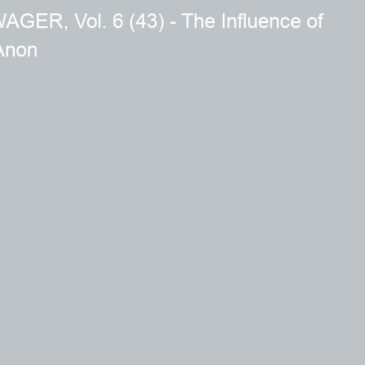The families of addicted gamblers are often hit hard financially. Two weeks ago, The Wager reviewed some suggestions for immediate action that family members can take to protect their financial stability. Research has shown, however, that not only are families impacted financially by a gambler’s addiction, but excessive gambling also can inflict emotionally injuries (Darbyshire, Oster, & Carrig, 2001). Darbyshire et al. offer the following quote from a research interview as an example:
P: Well whenever mum goes out my [older] brother locked himself in his bedroom, because my [11 year old] sister’s always like home and making arguments between us, so then he just locks his door to ignore her, and so, and then I get left with my sister saying that she wants mum, she’s scared and stuff, and she just is and my sister crying makes me a little bit more upset.
PD: So she gets really upset as well?
P: Only when mum goes out (…)
PD: So you end up looking after her as well.
P: Yep. And I always say to mum, look I’m stuck here, I’m only 13 and I’ve got to look after my sister and mum goes just ignore her, (…) but it’s not as easy as that. [Interview 5, 13 year old girl] (Darbyshire et al., 2001)
Painful emotional episodes such as this are all too familiar to the families of addicted gamblers. These shared experiences have contributed to the development of family support groups such as Gamanon. But, while the actions of addicted gamblers can affect their family members adversely, do actions of family members, such as joining Gamanon, influence addicted gamblers? A recent study by Zion, Tracy, & Abell (1991) examined how family members’ participation in Gamanon influenced a gambler’s likelihood of relapsing into problem gambling episodes. This Wager reports on findings concerning spousal involvement in treatment and self-reported relapse among addicted gamblers.
Zion et al. surveyed 43 Gamblers Anonymous (GA) members from 18 GA groups across Ohio. The collected data included demographics, self-help experience, gambling activity history, and spousal involvement in treatment. Individuals also reported their history of non-gambling addiction and rated, using a 1-5 scale (1=not at all and 5=totally), the degree to which they felt their spouse was supportive of recovery.
Results indicated that 40% of GA members relapsed at some point since their initial involvement with GA. Of these respondents, 63% experienced relapse within 6 months of joining GA. Sixty percent of all the surveyed gamblers had spouses in Gamanon. A direct comparison of gamblers whose spouses were in Gamanon to gamblers whose spouses were not in Gamanon revealed no difference in whether or not gamblers relapsed (?2(1)=1.29 p=0.26) and no differences in perceived spousal support of recovery.
Interestingly gamblers who relapsed reported significantly more non-gambling addictive behaviors in the past than non-relapsed gamblers (t(40.8)=-2.35, p=0.02). Relapse, however, did not predict gamblers’ cur-rent non-gambling addictive behaviors (t(41)=-1.48 p=0.15). The authors did not report if these risk factors were moderated by spousal involvement in Gamanon.
These results are quite interesting because, contrary to popular opinion, the findings suggest that the support and involvement in treatment provided by an addicted gambler’s family might not influence an addicted gambler’s tendency to relapse into gambling. However, these results also do not mean that the possibility of any influence is eliminated (Zion et al. 1991). Family members might influence gamblers in many ways that were not measured by this study. It is important to note, also, that these data were based entirely on the self-report of addicted gamblers. Perhaps a more rigorous approach, such as using collateral informants to confirm or deny reported gambling patterns, would paint a different picture. More research is needed to determine the many and varied roles that family members might take in enabling addicted gamblers to recover. Zion et al. paved the way for a careful examination of family involvement in treatment and its effect on the patterns of excessive gambling by a family member.
References
Darbyshire, P., Oster, C., Carrig, H. (2001). The experience of pervasive loss: Children and young people living in a family where parental gambling is a problem. Journal of Gambling Studies, 17(1), 23-45.
Zion , M. M., Tracy, E., & Abell, N. (1991). Examining the relationship between spousal involve-ment in GamAnon and relapse behaviors in pathological gamblers. Journal of Gambling Studies, 7(2), 117-131.
The WAGER is a public education project of the Division on Addictions at Harvard Medical
School. It is funded, in part, by the National Center for Responsible Gaming, the
Massachusetts Department of Public Health, the Addiction Technology Transfer Center of
New England, the Substance Abuse and Mental Health Services Administration, and the
Center for Substance Abuse Treatment.




